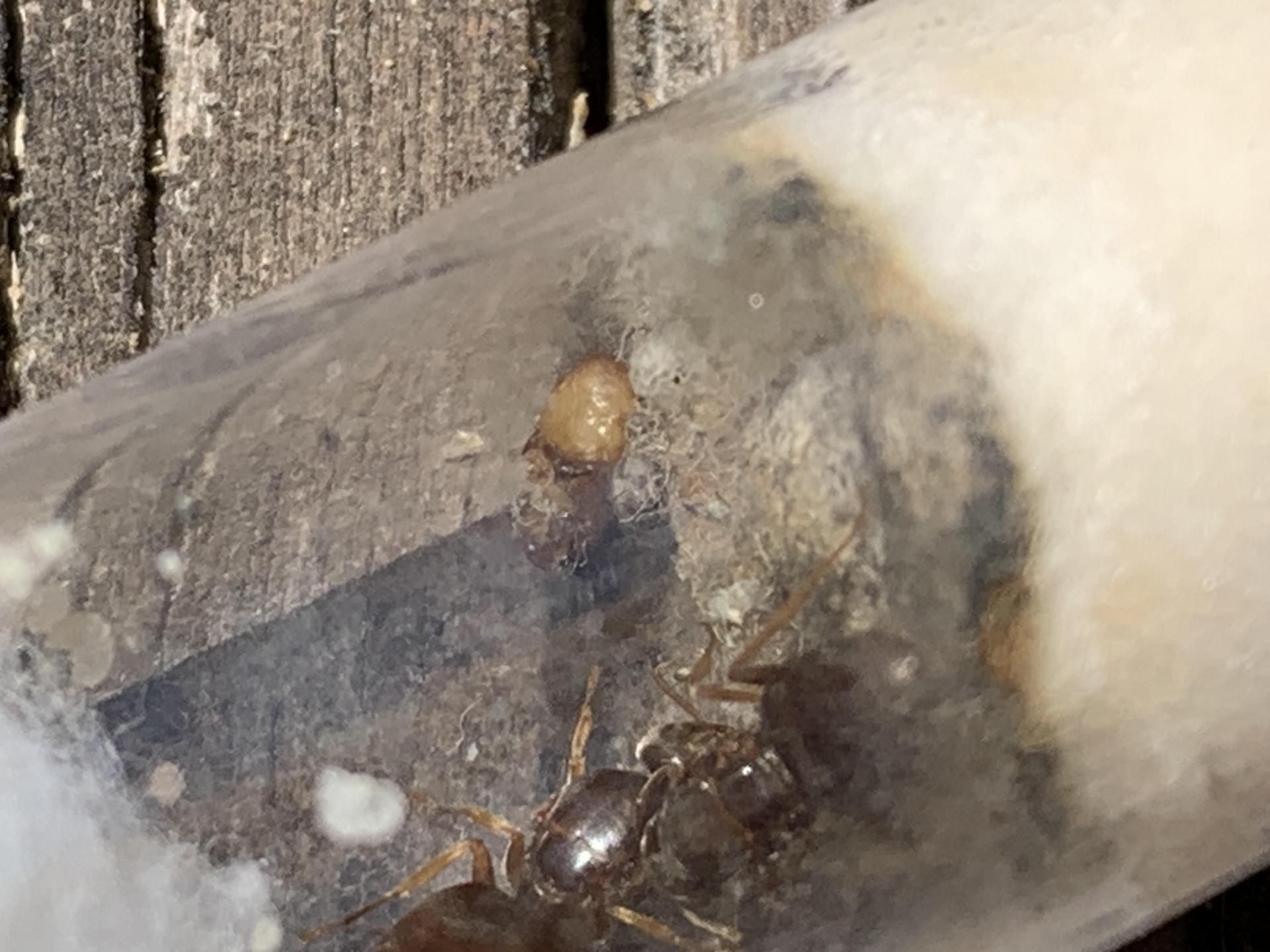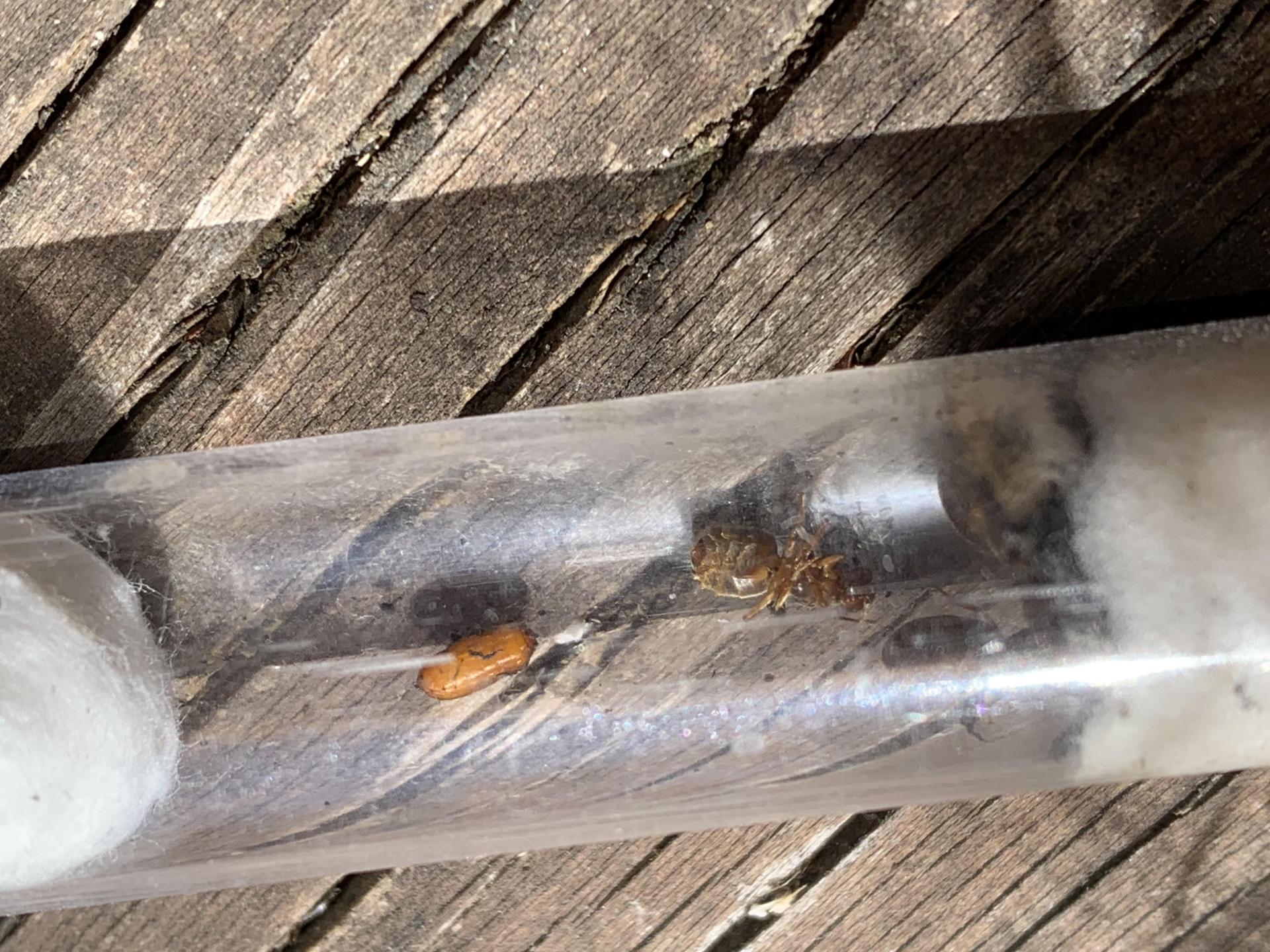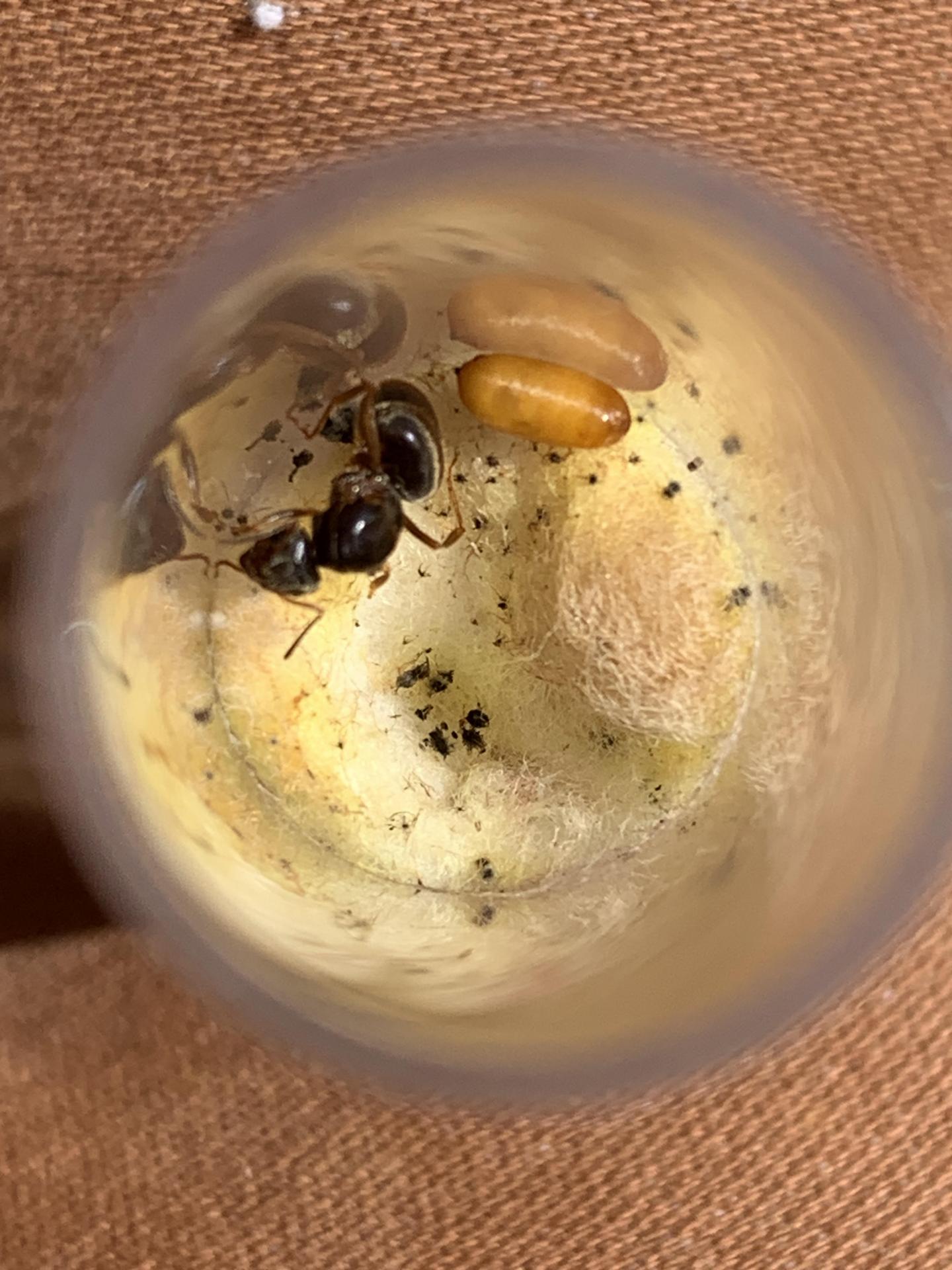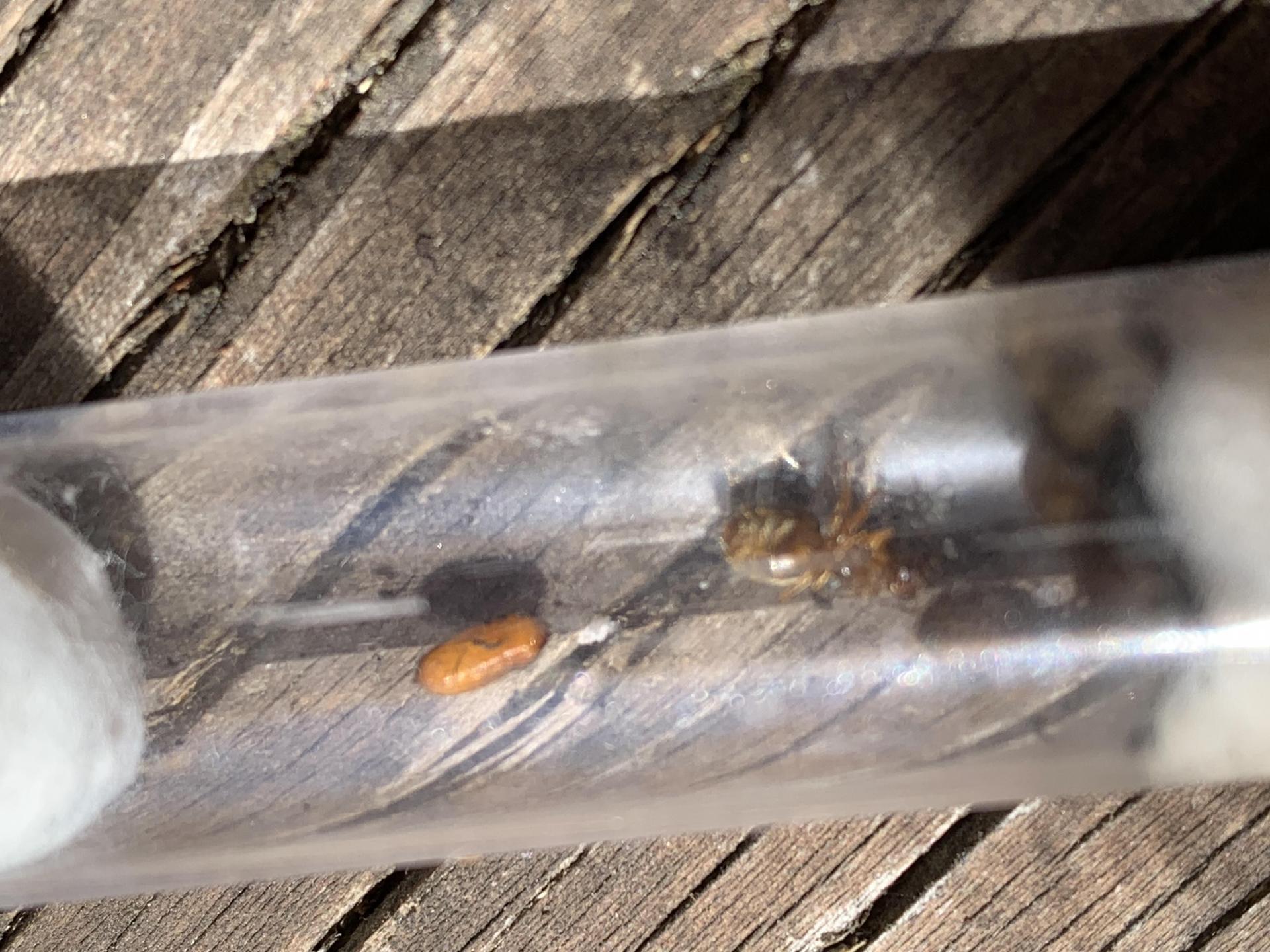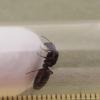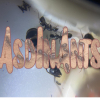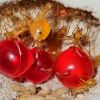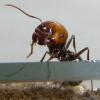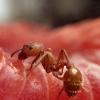This is a totally normal parasite of Lasius ants, that goes by the name Strongygaster globula. It is a fly.
I even feature it in my ant health talk next week at the vet conference, because in my youth, most Lasius queens I collected, had these parasites hatching out of them. Fascinating to watch, but a bummer, because no colony will develop and the affected queen will die.
It infects new queens, lays eggs on them and the larvae develop in the gaster.
When they pupate and crawl our of the host gaster, the queen, who will not be able to lay eggs (her insides are eaten), will care for the fly. When the fly emerges from the cocoon, it will fly off, to infect NEWLY formed queens (which will have their nuptial flights now).
Totally normal parasite life cycle and part of nature. Parasites are part of an ecosystem and part of our environment and play an important role- they are NOT yuck and NOT "evil".
(if you want to see evil, I dare you to visit any industrial slaughterhouse)
I am a veterinary parasitologist, by the way.
Anyways, bottom line is-
The infected queens will die and you can remove them
The uninfected queens are fine
The flies that hatch will go on to infect new queens (if you release them), but they will not go after your old ones (no use, they have used up all the nutrients that the flies need for development and that are usually used to produce the first eggs and start a colony).
So your old, unaffacted queens are fine either way.
As for releasing the flies-
as we said with the release of captive colonies- if you collected the queens with flies locally, you can release them again, since they are part of an ecosystem.
If you caught them in a different area, please do not release but do kill them.
You do NOT want to release foreign parasites to an environment. That causes all kinds of trouble.
My 2 cents as a veterinary parasitologist.
Edited by Ernteameise, June 14 2024 - 9:38 PM.
